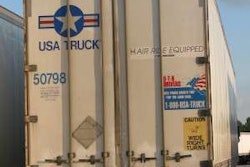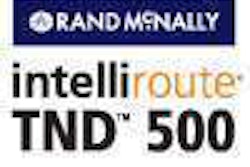| Editor’s note: This overview of California’s latest environmental moves is part of a series of articles analyzing the impact of the state’s new regulations on fleet management as January 2010 approaches.
The California Air Resources Board (CARB) has completed drafting two major regulations that will determine what equipment may be operated within California. Final regulatory action is set for early December, but the regulations are for all practical purposes final now. As a result of these and previously approved measures, California is set to dictate spec’ing decisions regarding engines, tractor and trailer aerodynamics and tires, as well as engines on reefer units on trailers for tens of thousands of fleets. One regulation – known as the truck and bus rule – that was finalized in October mandates a phased adoption of 2010 or better engine emissions technology through 2022, beginning in 2011. Under that rule, any engine less than seven years old is always ahead of the compliance schedule, and a truck with a 2007 engine is good through 2020. The regulation offers several compliance options, as well as some exceptions. By Jan. 1, 2023, all trucks operating in California would have to meet 2010 emissions standards. The other just-finalized regulation, which has come to be known somewhat misleadingly as the SmartWay rule, seeks to reduce greenhouse gas (GHG) emissions from trucks by mandating low rolling-resistance tires and aerodynamic styling and spec’ing choices on certain tractors and 53-foot box-type trailers. The regulation requires equipment that has been approved or verified by the Environmental Protection Agency’s SmartWay program, which is a voluntary initiative. That regulation takes effect in January for new equipment. (For a detailed discussion of CARB’s regulation to reduce GHG emissions from heavy-duty vehicles, see “Going to California?” CCJ, October 2009.) In addition to the GHG and truck/bus rules, two previously approved regulations affecting drayage operations and fleets operating refrigerated trailers are slated to kick in at the end of December. The drayage rule prohibits trucks with 1993 and older engines by Dec. 31 of this year, although several key ports already have implemented bans of trucks of that age or older. Trucks with engines 1994 through 2003 also must have particulate filters installed by that date. Those trucks, as well as trucks with 2004-2006 model engines, will need to meet 2007 emissions standards or be replaced by 2014. Drayage trucks meeting 2007 emissions will be fine through 2020, when they would be subject to the phaseout schedule under the truck/bus rule. Another previously approved regulation that is slated to take effect at the end of the year is one affecting transport refrigeration units (TRUs) on trailers. The American Trucking Associations and others are challenging EPA’s decision in January to grant a waiver to CARB to implement the rule, which would require that 2002 or older reefer unit engines meet low-emissions standards or be replaced by Dec. 31. Newer models would be subject to ultra-low-emissions standards by Dec. 31 of the year that is the model year plus seven years. In other words, a reefer unit with a 2004 engine would either have to be retrofit or replaced to meet ultra-low-emissions standards by Dec. 31, 2011. All of these mandates are on top of existing rules regulating auxiliary power units on trucks with 2007 or newer engines and limiting engine idling to five minutes in the absence of an approved Clean Idle engine. Most of the new and recent CARB rules contain provisions that will require clarification or interpretation, or will work to disadvantage some fleets relative to others, notes Kirk Altrichter, vice president of maintenance for Pacific, Wash.-based Gordon Trucking. Some also could lead to unexpected headaches, Altrichter said during a presentation in September at the Technology and Maintenance Council Fall Meeting in Raleigh, N.C. For example, CARB is requiring that aerodynamic technologies not be used if they are damaged to the extent that their effectiveness is compromised. For starters, fleet will bear maintenance costs, but the extent to which a device is too damaged also could be a judgment call, he says. Altrichter also questions whether CARB misses the larger picture. Gordon Trucking calculates that all of the technologies CARB contemplates would add up to 1,750 pounds per tractor-trailer. The effect, therefore, would be to reduce payload, requiring more trucks to haul the same freight. For details on all CARB regulations regarding commercial trucks, visit the agency’s interactive webpage at www.arb.ca.gov/truckstop. |










